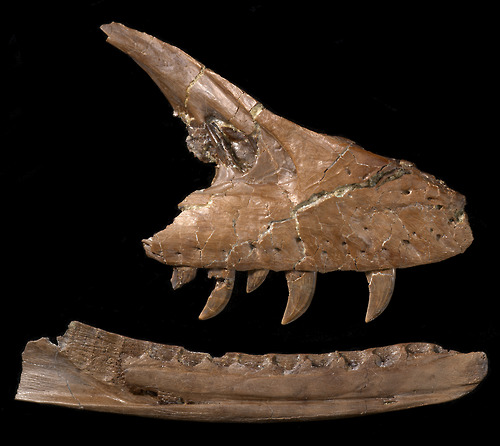Introducing Acheroraptor temertyorum
![Left: Two Acheroraptor feeding at a Triceratops carcass as Tyrannosaurus rex approaches. Courtesy of Julius Csotonyi. (cropped) Right: Acheroraptor temertyorum recreation. By Emily Willoughby, www.emilywilloughby.com [CC-BY-3.0 (http://creativecommons.org/licenses/by/3.0)], via Wikimedia Commons Illustrations of dinosaurs in landscape.](https://www.rom.on.ca/sites/default/files/styles/blog_large/public/blog_post/thumbnail/acheroraptor-temertyorum_jcesar.jpg?itok=bzOGTrkA)
On December 16, 2013, the ROM Palaeontology team formally announced the discovery of a new species of dinosaur, a small, meat-eating raptor: Acheroraptor temertyorum. Based on analysis of upper and lower jaw fossils recently unearthed in Montana, the team determined the creature was quite large for a raptor, approaching Deinonychus in size, with a long-snouted skull and dagger-like ridged teeth.

Acheroraptor (ACK-ear-oh-RAP-tor) means “Acheron Plunderer,” a clever derivation from "Acheron," the name of the River of Pain in the mythical underworld of Ancient Greece, thereby acknowledging the location of the fossils in Montana's Hell Creek Formation. The specific name temertyorum was chosen to honour James and Louise Temerty for their outstanding service and contributions to the Royal Ontario Museum and particularly their extraordnarily enthusiastic support of its palaeontology initiatives.
Acheroraptor was one of the last non-avian dinosaurs, living roughly 66 million years ago in western North America in a community that also included Tyrannosaurus rex and Triceratops. Its identification provides a more complete picture than ever of the ecosystem in North America just before the great extinction that marked the end of the Age of Dinosaurs.
The unique ridged teeth of Acheroraptor have presented palaeontologists with a puzzle for decades, because the lack of sufficient diagnostic material did not permit determination of its taxonomic affinities and evolutionary relationships until now. Interestingly, the jaw bones of Acheroraptor compare more closely to those of Velociraptor and other long-snouted Asian species than to older species found in North America. Dromaeosaurid evolutionary relationships and biogeography will continue to be contentious since phylogenetic analysis based on the dataset of Longrich and Currie (2009) placed Acheroraptor as a velociraptorine dromaeosaurid, nested within a group of Asian species. The surprisngly close evolutionary relationship of Acheroraptor to a group of late-occurring Asian species that includes Velociraptor suggests that migration from Asia may have continued to shape North American dinosaur communities right up until the end of the Cretaceous period.
The research describing Acheroraptor was published in the latest issue of Naturwissenschaften: Evans, D. C., D. Larson, and P. J. Currie. 2013. A New Dromaeosaurid (Dinosauria: Theropoda) with Asian Affinities from the latest Cretaceous of North America. Naturwissenschaften 100 (11): 1041-1049.
